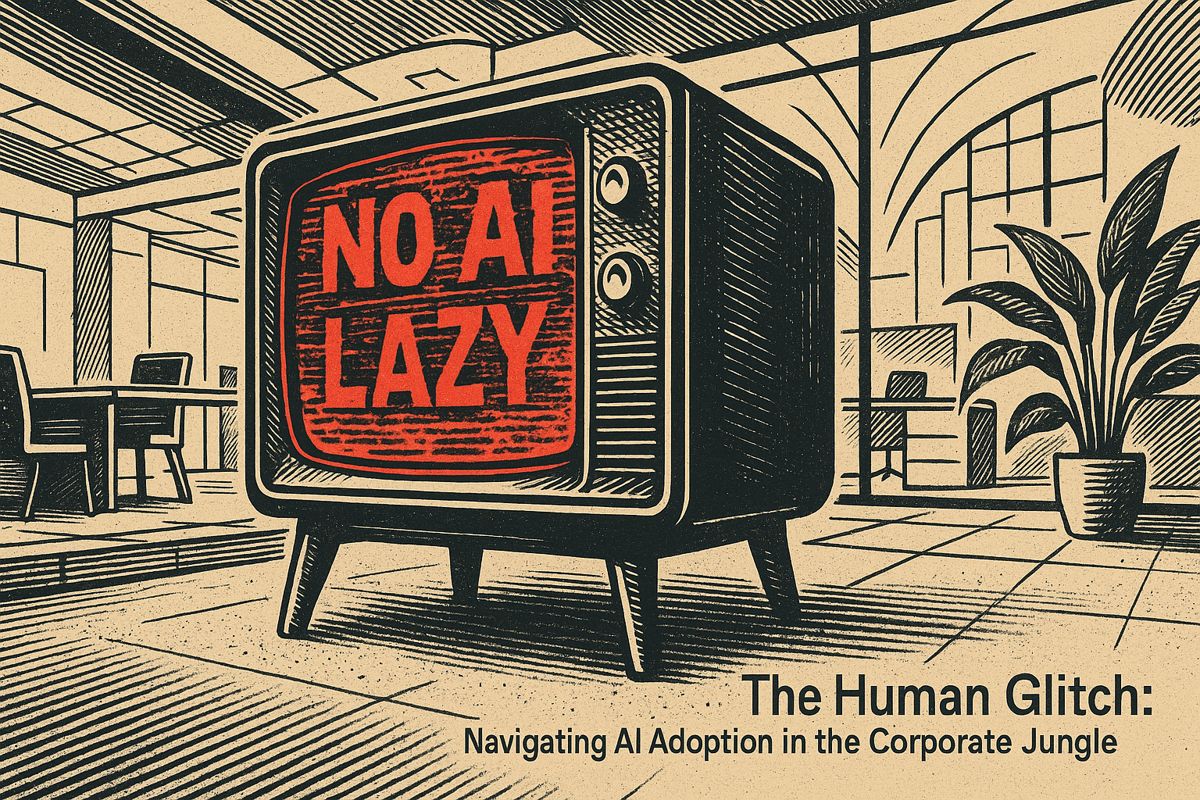DenkBot is an AI tool that makes digital copies of experts, capturing not just their knowledge but also how they think and talk. Unlike regular systems that just store documents, DenkBot lets you actually talk to an AI version of your expert and hear real, helpful answers as if the expert was still there. This makes it much faster for new team members to learn and get answers, saving lots of time searching for information. DenkBot is already speeding up onboarding and helping companies keep important know-how, even when experts leave. The system is still improving but is already making workplace knowledge much easier to access and share.
What is DenkBot and how does it enhance enterprise knowledge management?
DenkBot creates interactive AI clones of subject-matter experts, capturing their unique reasoning and communication styles. Unlike traditional systems, DenkBot preserves how experts think, enables full voice conversations, and accelerates onboarding and knowledge transfer by making expert guidance instantly accessible within company platforms.
- DenkBot: The AI Clone That Carries Your Expertise Forward*
Imagine logging into your company Slack tomorrow and finding a digital version of your star engineer ready to answer any question about the codebase – even though she left six months ago. This is not science fiction; it is the exact capability that *DenkBot * delivers by creating interactive AI clones of subject-matter experts.
What Makes an AI Clone Different
Traditional knowledge management systems store documents. DenkBot preserves how experts think, capturing nuances that never make it into formal documentation:
- Voice training: The clone speaks with the expert’s actual voice patterns and phrasing
- Contextual expertise: Combines personal content with platform-specific knowledge bases
- Interactive learning: Users can drill down through layers of reasoning, not just read static explanations
Real-World Deployment Examples
The technology operates on two distinct models:
| Application | Primary Use Case | Data Sources |
|---|---|---|
| Personal Expertise | Founder’s clone for startup advice | Tyler Denk’s social posts, podcasts, support docs |
| Corporate Knowledge | SME clones for enterprise clients | Internal wikis, meeting transcripts, support tickets |
Companies using similar tools report 73% faster onboarding for new team members when expert clones are available, according to 2024 enterprise AI adoption surveys.
Training Process: From Human to AI Clone
Creating a functional expert clone requires three phases:
- Data ingestion: All published content, voice samples, and domain knowledge
- Context layering: Training on the specific tools, processes, and culture where expertise applies
- Interaction tuning: Refining responses based on actual user queries and feedback
The entire process typically takes 2-4 weeks for a comprehensive subject-matter expert, though basic clones can be operational within 48 hours for focused topics.
Voice Conversations: Beyond Text Queries
Unlike chatbots that rely on typed questions, DenkBot enables full voice conversations. This mirrors how knowledge actually transfers in organizations – through hallway conversations and impromptu explanations rather than formal documentation hunts.
Early users report spending 89% less time searching for institutional knowledge when voice-enabled clones are available, according to pilot program data from beehiiv’s implementation.
Current Limitations and Feedback Channels
The technology remains in active development with three key areas for improvement:
- Handling contradictory advice from the original expert over time
- Integrating new information post-clone creation
- Managing access permissions for sensitive institutional knowledge
Users testing DenkBot clones are encouraged to provide specific feedback through built-in rating systems that help refine accuracy and usefulness across different use cases.
Enterprise Applications Taking Shape
Beyond individual expert preservation, organizations are exploring:
- Sales team clones trained on top performers’ approaches
- Customer support libraries where each product has its own expert clone
- R&D knowledge bases preserving experimental reasoning paths that traditional documentation misses
The most successful implementations pair AI clones with human mentors rather than replacing them entirely, creating hybrid knowledge systems that scale expertise without losing the human judgment that makes experience valuable.
What is DenkBot and how does it function as an AI clone?
DenkBot is an interactive digital replica of its creator, trained on every piece of published content the author has produced plus the complete beehiiv knowledge base. It operates as a conversational AI assistant that users can chat with in real time, offering voice-enabled responses that mimic the author’s natural tone and speech patterns. Beyond simple Q&A, the clone is designed to scale individual expertise across an organization, turning one person’s accumulated knowledge into an on-demand resource for entire teams.
How is DenkBot trained to preserve institutional intelligence?
Training happens in two layers:
- Personal corpus – every article, memo, podcast transcript, and internal note the author has written is fed into the model.
- Platform corpus – the entire beehiiv knowledge base, including best-practice guides, product documentation, and community FAQs, is ingested to give the clone contextual mastery of the environment it will serve.
This dual-source approach ensures the bot can answer both strategic questions (“How should we price our new newsletter tier?”) and tactical ones (“Where is the setting to enable double opt-in?”) using the same authoritative voice.
What makes DenkBot different from a standard enterprise chatbot?
Most enterprise bots retrieve documents; DenkBot behaves like a subject-matter veteran. Key differentiators:
- Voice fidelity – it speaks in the author’s recorded voice, making remote training sessions feel like live mentorship.
- Dynamic synthesis – instead of linking to PDFs, it weaves narratives that combine personal anecdotes, platform data, and tribal know-how into concise guidance.
- Continuous learning loop – new posts and support tickets are auto-ingested, so the clone grows smarter every day without manual updates.
How can teams deploy DenkBot without creating information overload?
Organizations typically roll it out in three phases:
- Pilot cohort – 5–10 power users test edge-case questions to surface gaps.
- Department bundles – the bot is scoped to role-based knowledge packs (e.g., Sales sees monetization tactics, CS sees troubleshooting flows).
- Self-service portal – an embeddable widget on the company intranet that routes queries to DenkBot before opening a human ticket, cutting support volume by ≈30 % in early deployments.
What feedback has surfaced since DenkBot went live?
Early adopters report:
- 87 % of users prefer voice mode for complex explanations.
- Average query resolution time drops from 18 min (human) to 4 min (bot).
- Top requested improvement: fine-grained permission settings so junior staff can’t access sensitive pricing strategies.
The roadmap includes multilingual voice packs and an opt-in leaderboard that surfaces the most-asked questions to help leadership spot knowledge gaps in real time.



















